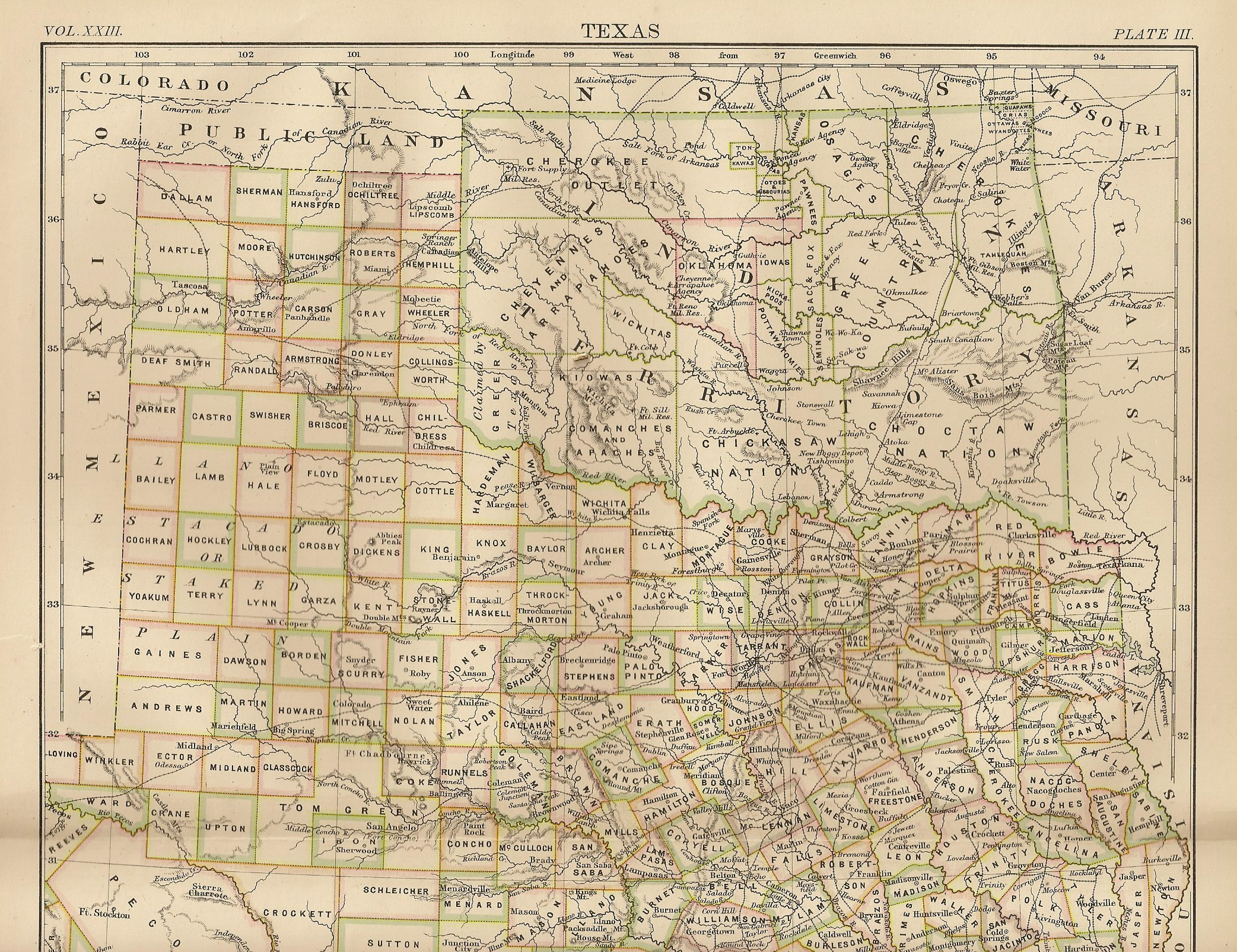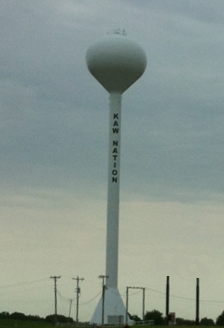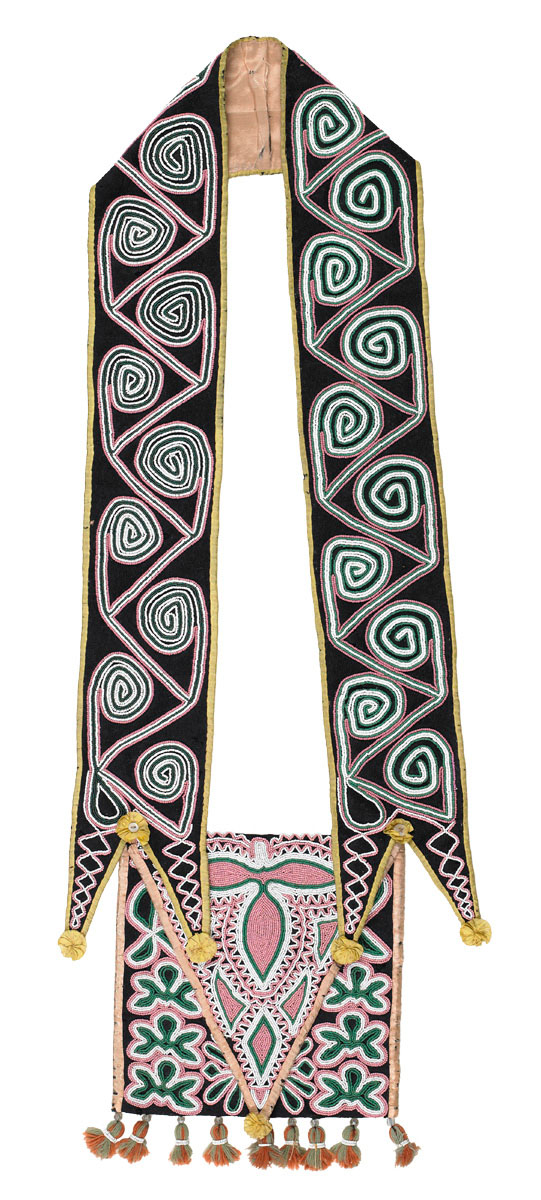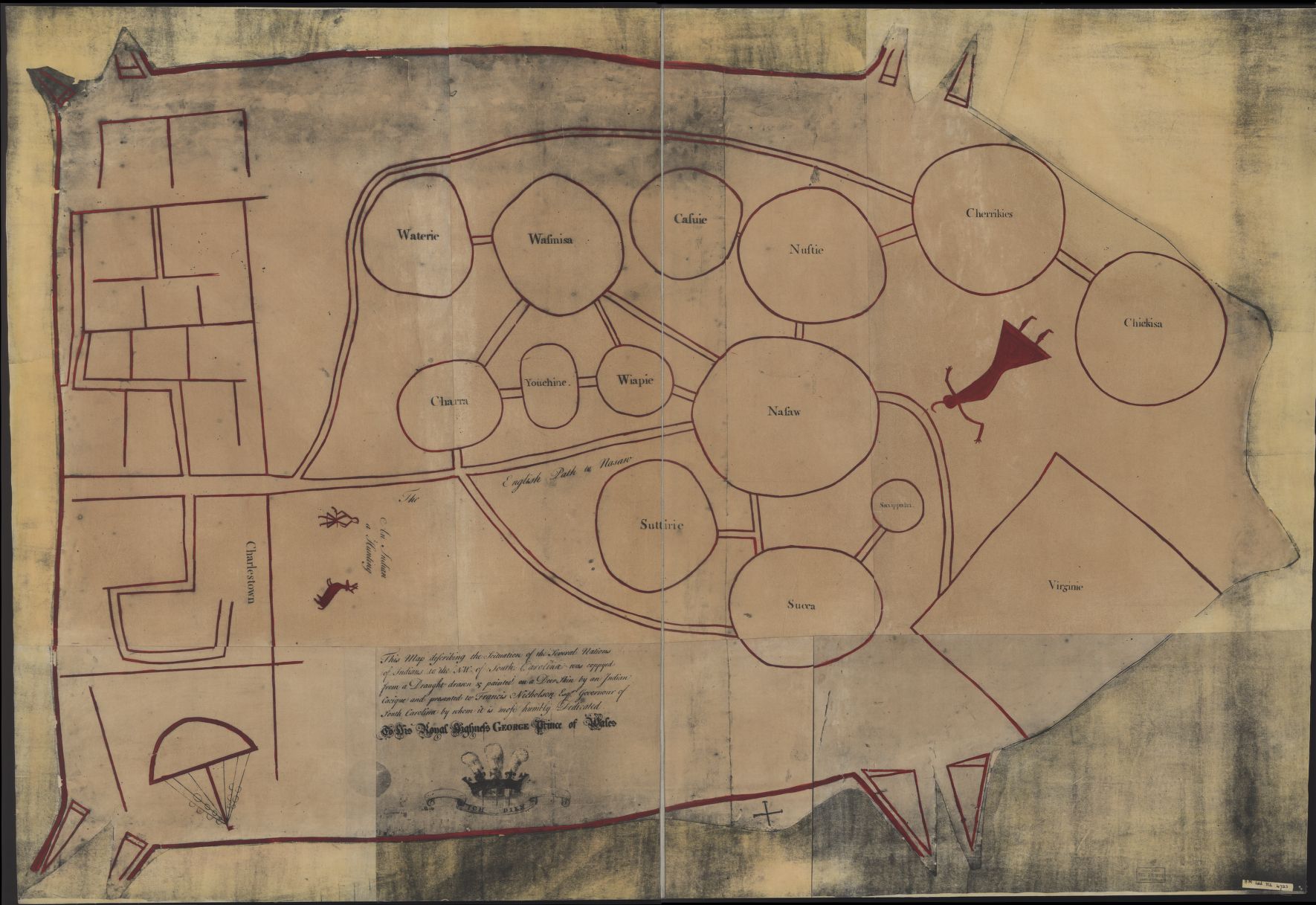|
First Americans Museum
The First Americans Museum (FAM) is a museum in Oklahoma City, Oklahoma, U.S. It was previously known as the American Indian Cultural Center and Museum. It officially opened on September 18, 2021. Background The center was initiated in the 1990s and previously was named the American Indian Cultural Center and Museum. Construction began in 2006, was interrupted in 2012 when state funding ran out, but resumed in 2019, after the responsibility for the museum was transferred from the State of Oklahoma to Oklahoma City. Mission The mission of First Americans Museum is, "To serve as a dynamic center promoting awareness and educating the broader public about the unique cultures, diversity, history, contributions, and resilience of the First American Nations in Oklahoma today." Staff The FAM's executive director is James Pepper Henry (Kaw people, Kaw/Muscogee). Deputy director is Shoshana Wasserman (Thlopthlocco Muscogee). Chief curator is Heather Ahtone (Choctaw/Chickasaw). Loretta ... [...More Info...] [...Related Items...] OR: [Wikipedia] [Google] [Baidu] |
James Pepper Henry
James Pepper Henry is a Native Americans in the United States, Native American museum director and vice-chairman of the Kaw Nation. He is the executive director of the First Americans Museum in Oklahoma City, Oklahoma, which opened on 18 September 2021. On 17 April 2017, the ''Tulsa World'' reported that Henry had resigned from his position as executive director of Tulsa's Gilcrease Museum, effective 14 April 2017. Five days later, ''The Oklahoman'', the Oklahoma City newspaper, revealed on 22 April 2017, that the AICCM had hired the former Gilcrease executive director as "director of the Indian Cultural Center (ICC) and chief executive officer of its foundation," starting June 19. Tulsa University announced that it had hired Henry as the executive director of Gilcrease Museum in Tulsa, Oklahoma, effective 1 March 2015. Henry had previously served as director and CEO of the Heard Museum in Phoenix, Arizona, since 2013. Before going to the Heard, he had served for six years at the ... [...More Info...] [...Related Items...] OR: [Wikipedia] [Google] [Baidu] |
Heather Ahtone
heather ahtone, PhD ( Chickasaw), is director of Curatorial Affairs at the First Americans Museum. Background and education Heather Ahtone is enrolled in the Chickasaw Nation and a descendant of the Choctaw Nation of Oklahoma. She received an associate's degree from the Institute of American Indian Arts (IAIA) in 1993 and her master's degree (2006) and doctoral degree from the University of Oklahoma (OU). Career Ahtone previously worked at the IAIA and the Southwestern Association for Indian Arts (SWAIA). In 2007, she began researching at the OU School of Geology and Geophysics while teaching courses in Art History in Norman, Oklahoma. She served as the James T. Bialac Curator of Native American and Non-Western Art at the Fred Jones Jr. Museum of Art, part of OU, from 2012 to 2018. She became the senior curator at the First Americans Museum in Oklahoma City, Oklahoma, in 2018. Involved with the museum's planning, ahtone is responsible for creating exhibitions for the ... [...More Info...] [...Related Items...] OR: [Wikipedia] [Google] [Baidu] |
Oklahoma City
Oklahoma City (), officially the City of Oklahoma City, and often shortened to OKC, is the capital and largest city of the U.S. state of Oklahoma. The county seat of Oklahoma County, it ranks 20th among United States cities in population, and is the 8th largest city in the Southern United States. The population grew following the 2010 census and reached 687,725 in the 2020 census. The Oklahoma City metropolitan area had a population of 1,396,445, and the Oklahoma City– Shawnee Combined Statistical Area had a population of 1,469,124, making it Oklahoma's largest municipality and metropolitan area by population. Oklahoma City's city limits extend somewhat into Canadian, Cleveland, and Pottawatomie counties, though much of those areas outside the core Oklahoma County area are suburban tracts or protected rural zones (watershed). The city is the eighth-largest in the United States by area including consolidated city-counties; it is the second-largest, after Houston, not i ... [...More Info...] [...Related Items...] OR: [Wikipedia] [Google] [Baidu] |
Kaw People
The Kaw Nation (or Kanza or Kansa) is a federally recognized Native American tribe in Oklahoma and parts of Kansas. It comes from the central Midwestern United States. It has also been called the "People of the South wind","Constitution of the Kaw Nation." ''Kaw Nation.'' 2011. Retrieved 30 April 2012. "People of water", ''Kansa'', ''Kaza'', ''Konza'', ''Conza'', ''Quans'', ''Kosa'', and ''Kasa''. Their tribal language is Kansa, classified as a Siouan language.Unrau, William Kaw (Kansa). ... [...More Info...] [...Related Items...] OR: [Wikipedia] [Google] [Baidu] |
Muscogee
The Muscogee, also known as the Mvskoke, Muscogee Creek, and the Muscogee Creek Confederacy ( in the Muscogee language), are a group of related indigenous peoples of the Southeastern Woodlands, indigenous (Native American) peoples of the Southeastern WoodlandsTranscribed documents Sequoyah Research Center and the American Native Press Archives in the United States, United States of America. Their original homelands are in what now comprises southern Tennessee, much of Alabama, western Georgia (U.S. state), Georgia and parts of northern Florida. Most of the Muscogee people were forcibly Indian Removal, removed to Indian Territory (now Oklahoma) by the federal government in the 1830s during the Trail of Tears. A small group of the Muscogee Creek Confederacy remained in Alabama, and t ... [...More Info...] [...Related Items...] OR: [Wikipedia] [Google] [Baidu] |
Thlopthlocco
Thlopthlocco Tribal Town is both a federally recognized Native American tribe and a traditional township of Muscogee Creek Indians, based in Oklahoma. The tribe's native language is Mvskoke, also called Creek. Pronunciation An item in the ''Tulsa World'' explained: "The sound of the "thl" is usually spelled with an "r" in the Muscogee language and is pronounced in English by placing the tongue halfway between the "th" position and the "l" position." History The Muscogee Creek confederacy was composed of autonomous tribal towns, governed by their own elected leadership. The Creek originated in the Southeastern United States, in what is now Alabama and Georgia. They were collectively removed from the southeast to Indian Territory under the United States' Indian Removal Policy of the 1830s. Before 1832, the Thlopthlocco Tribal Town split from a larger town. It was removed to Indian Territory in 1835.Moore, John H"Thlopthlocco Tribal Town."''Oklahoma Historical Society's Ency ... [...More Info...] [...Related Items...] OR: [Wikipedia] [Google] [Baidu] |
Choctaw
The Choctaw (in the Choctaw language, Chahta) are a Native American people originally based in the Southeastern Woodlands, in what is now Alabama and Mississippi. Their Choctaw language is a Western Muskogean language. Today, Choctaw people are enrolled in three federally recognized tribes: the Choctaw Nation of Oklahoma, Mississippi Band of Choctaw Indians, and Jena Band of Choctaw Indians in Louisiana. The Choctaw were first noted by Europeans in French written records of 1675. Their mother mound is Nanih Waiya, a great earthwork platform mound located in central-east Mississippi. Early Spanish explorers of the mid-16th century in the Southeast encountered ancestral Mississippian culture villages and chiefs. The Choctaw coalesced as a people in the 17th century and developed at least three distinct political and geographical divisions: eastern, western, and southern. These different groups sometimes created distinct, independent alliances with nearby European pow ... [...More Info...] [...Related Items...] OR: [Wikipedia] [Google] [Baidu] |
Chickasaw
The Chickasaw ( ) are an indigenous people of the Southeastern Woodlands. Their traditional territory was in the Southeastern United States of Mississippi, Alabama, and Tennessee as well in southwestern Kentucky. Their language is classified as a member of the Muskogean language family. In the present day, they are organized as the federally recognized Chickasaw Nation. Chickasaw people have a migration story in which they moved from a land west of the Mississippi River, where they settled mostly in present-day northeast Mississippi, northwest Alabama, and into Lawrence County, Tennessee. They had interaction with French, English, and Spanish colonists during the colonial period. The United States considered the Chickasaw one of the Five Civilized Tribes of the Southeast, as they adopted numerous practices of European Americans. Resisting European-American settlers encroaching on their territory, they were forced by the U.S. government to sell their traditional lands ... [...More Info...] [...Related Items...] OR: [Wikipedia] [Google] [Baidu] |
Loretta Barrett Oden
Loretta Barrett Oden is an American chef, Native foods historian, food writer, and television show host. She is an enrolled member of the Potawatomi tribe. She wrote and hosted the PBS series ''Seasoned With Spirit: A Native Cook's Journey''. Oden writes a column, ''Spirit of the Harvest,'' for ''Native Peoples Magazine''. Early life Oden was born in Shawnee, Oklahoma. She is a member of the Citizen Potawatomi Nation. Career Oden spent three years traveling around the United States learning recipes from many different Native American tribes. In the early 1990s when she was 50 years old, Oden opened a restaurant, ''Corn Dance Café'' in Santa Fe, New Mexico, with her son Clayton. The dishes were inspired by the many tribal traditions she learned in her travels. She returned to Oklahoma in 2003. Oden is a native foods historian, food writer, and television show host. She is the chef consultant of the First Americans Museum in Oklahoma City, Oklahoma. She is working with ... [...More Info...] [...Related Items...] OR: [Wikipedia] [Google] [Baidu] |
Potawatomi
The Potawatomi , also spelled Pottawatomi and Pottawatomie (among many variations), are a Native American people of the western Great Lakes region, upper Mississippi River and Great Plains. They traditionally speak the Potawatomi language, a member of the Algonquin family. The Potawatomi call themselves ''Neshnabé'', a cognate of the word ''Anishinaabe''. The Potawatomi are part of a long-term alliance, called the Council of Three Fires, with the Ojibway and Odawa (Ottawa). In the Council of Three Fires, the Potawatomi are considered the "youngest brother" and are referred to in this context as ''Bodwéwadmi'', a name that means "keepers of the fire" and refers to the council fire of three peoples. In the 18th century, they were pushed to the west by European/American encroachment and eventually removed from their lands in the Great Lakes region to reservations in Oklahoma. Under Indian Removal, they eventually ceded many of their lands, and most of the Potawatomi relocate ... [...More Info...] [...Related Items...] OR: [Wikipedia] [Google] [Baidu] |
Center Of The American Indian
The Center of the American Indian (CAI) was an intertribal, Native American-led museum in Oklahoma City, Oklahoma. It was housed in the second floor of the Kirkpatrick Center. The Center of the American Indian produced a quarterly journal, ''The Storyteller''. The CAI held workshops, language classes, and symposia, such as "We Always Had Plenty: Native Americans and the Bison" held in 1989. CAI helped launch the Red Earth Festival in 1987. In 1992, the Center of the American Indian merged into Red Earth Inc., marking the end of its Native American leadership. Personnel and supporters Mary Jo Watson (Seminole) served as director of the museum from 1984 to 1988. Baseball legend Allie Reynolds (Muscogee Creek) served as board chairman. Artists Benjamin Harjo Jr. (Absentee Shawnee/Seminole and Sharron Ahtone Harjo (Kiowa) volunteered at the museum and served on the board. Collector Arthur Silberman advised the museum. Selection exhibitions and publications In 1990, the muse ... [...More Info...] [...Related Items...] OR: [Wikipedia] [Google] [Baidu] |
2021 Establishments In Oklahoma
1 (one, unit, unity) is a number representing a single or the only entity. 1 is also a numerical digit and represents a single unit of counting or measurement. For example, a line segment of ''unit length'' is a line segment of length 1. In conventions of sign where zero is considered neither positive nor negative, 1 is the first and smallest positive integer. It is also sometimes considered the first of the infinite sequence of natural numbers, followed by 2, although by other definitions 1 is the second natural number, following 0. The fundamental mathematical property of 1 is to be a multiplicative identity, meaning that any number multiplied by 1 equals the same number. Most if not all properties of 1 can be deduced from this. In advanced mathematics, a multiplicative identity is often denoted 1, even if it is not a number. 1 is by convention not considered a prime number; this was not universally accepted until the mid-20th century. Additionally, 1 is the ... [...More Info...] [...Related Items...] OR: [Wikipedia] [Google] [Baidu] |





